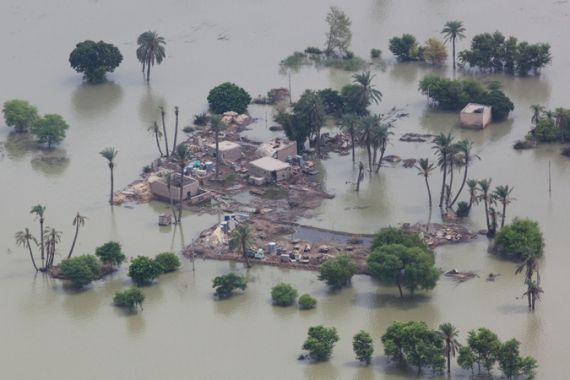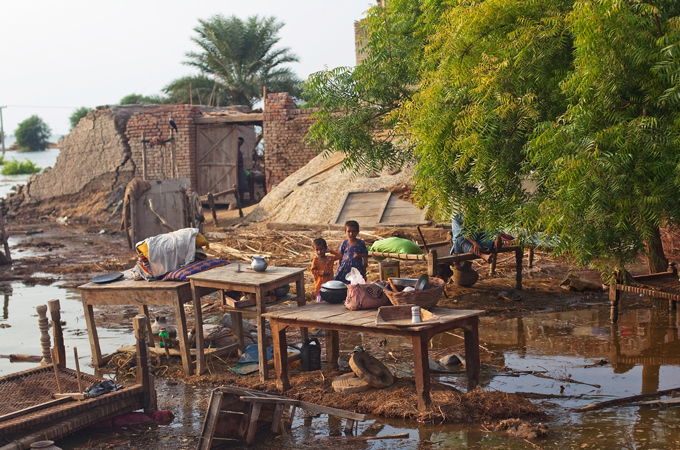The monsoon brings flooding to Pakistan
How much rain can the country stand?

 |
| 22 million people were affected in 2010, when Pakistan was hit by unpredendented flooding [GETTY] |
Last year the flooding was unprecedented; 2,000 people lost their lives and 11 million suddenly found themselves homeless.
This year, Pakistan’s Meteorological Office forecast the monsoon rains to be 10 percent below average, but this doesn’t mean that there won’t be any flooding. In fact for some parts of the country, the flooding has already started.
Keep reading
list of 4 itemsTurtles swimming to extinction in Malaysia as male hatchlings feel heat
Could shipping containers be the answer to Ghana’s housing crisis?
Thousands protest against over-tourism in Spain’s Canary Islands
It is not unusual for Pakistan to see flooding during the monsoon, almost every year somewhere will be submerged. How much rain is needed to cause flooding depends on many things, including what the topography of the land, the land type (cement or soil), and how much rain the area normally receives.
The monsoon rains don’t fall uniformly across the country. The heaviest rains are usually seen in the northeast, with Islamabad recording an average August rainfall of 258mm.
This contrasts starkly with the rainfall in the south, which is a desert region. The wettest months in Jacobabad, in Sindh Province, are July and August, which only receive a paltry 23mm rain each.
This means that in the south, it will take less rain to cause flooding. The ground here is baked hard by the sun, making it less able to absorb water. The water, therefore, remains on top of the hard ground, running downhill into valleys and causing flooding.
With such a low annual rainfall, most of the people here rely on the mighty Indus River for irrigation. As the population has swelled, the water levels have dwindled, so people have moved closer to the water’s edge, building their homes on the river’s flood plains.
In 2010, the heaviest of the rains struck in the north of the country, but then the waters roared down the rivers towards the sea. In the Sindh province, in the southeast, the mighty Indus punched holes in its banks and submerged vast plains on either side of it. Whole villages were swept away as the waters raged past.
The damage to dykes and embankments was so bad, that this year the Sindh Province is particularly vulnerable to flooding again.
The flow of the Indus River has actually changed, meaning that the villages which are now at risk of flooding, are villages that have rarely had to face flooding before.
Already this year, heavy downpours have swamped parts of Pakistan. The rains which hit Lahore on the 7 and 8 August, brought 131mm in just 24 hours. This is easily enough to cause flooding, overflowing drains and rendering some roads impassable.
Further south, in the Sindh province where rainfall is normally low, Badin reported over 145mm rain for two days running. This marooned several villages in the area and washed away thousands of acres of crops.
The flooding from this year’s monsoon has clearly started, but so far there have only been isolated incidents. Over the next few weeks, more rain will hit the country, and the repairs from last year’s devastation will continue to be tested.